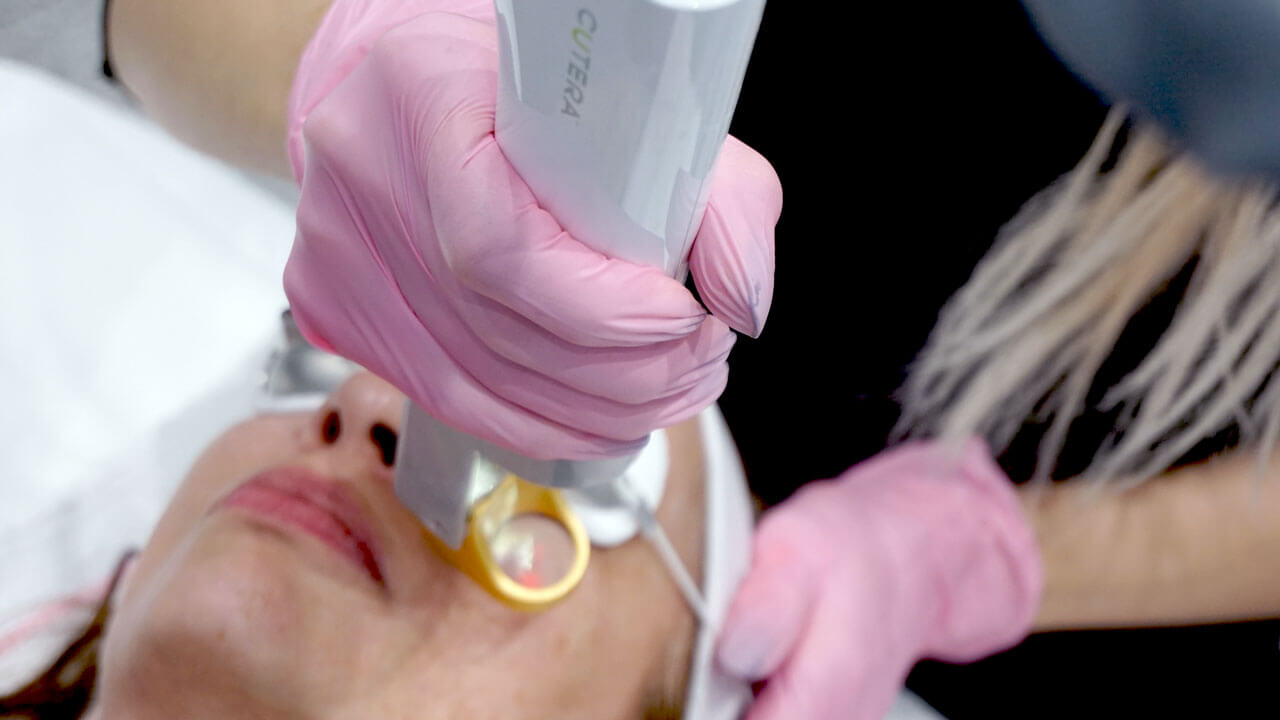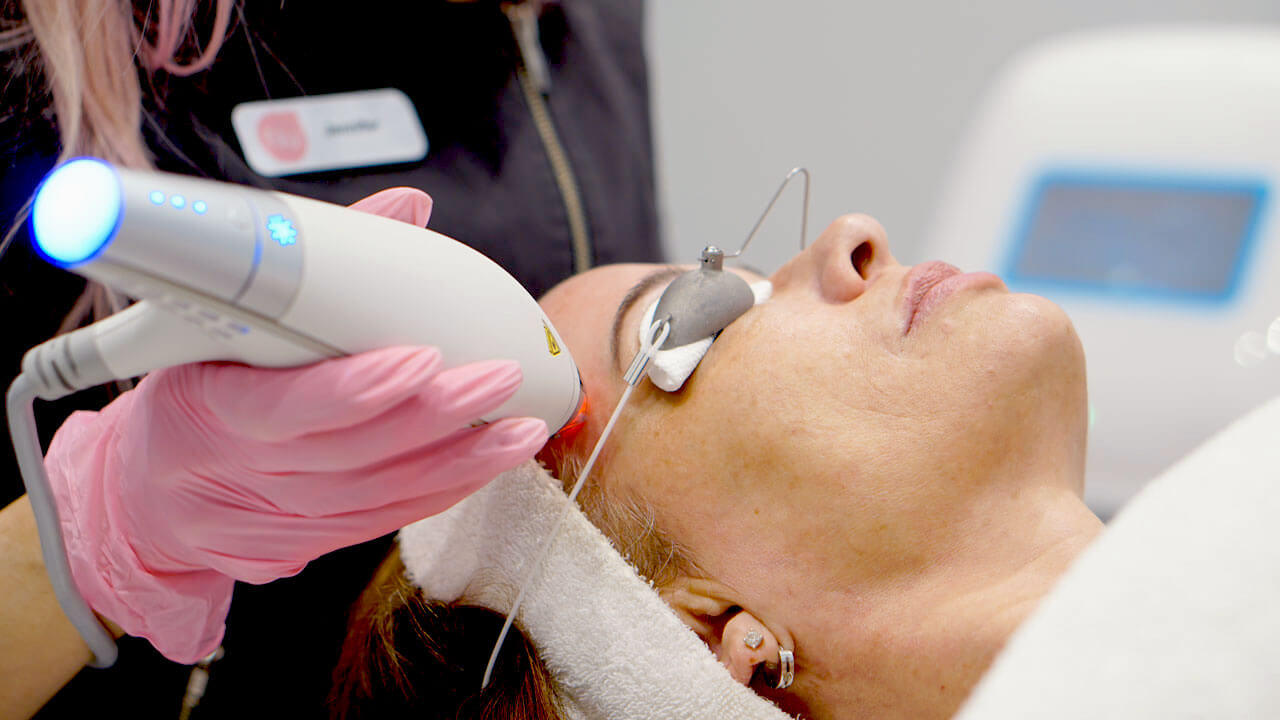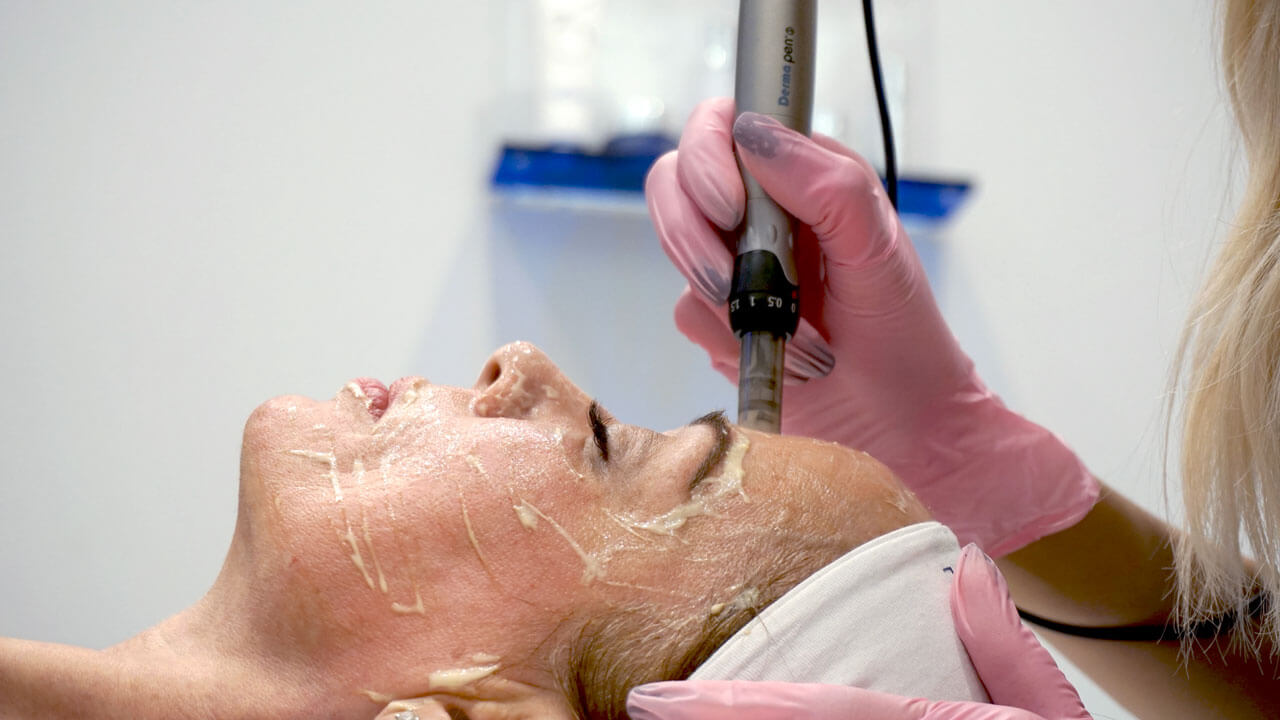Acne Scars are formed when a breakout penetrates the skin deeply and damages the tissues beneath it. They are usually the result of inflamed blemishes caused by skin pores full of excess oil, dead skin cells and bacteria. The skin attempts to repair itself by forming new collagen fibers, but it doesn’t always repair quite the same as the original skin.
How Do Acne Scars Form?
Wound Healing Response
Wound healing involves four main phases: hemostasis, inflammation, proliferation and tissue remodelling or maturation. Pigmented scars (PIE or PIH) come from the initial inflammation stage of the wound healing process. Raised and indented scars come from the proliferation stage of healing, where the cells surrounding the injury multiply rapidly. At the base of the wound, fibroblast cells work to produce new collagen to start the reconstruction of the tissue. Sometimes the collagen of scar tissue cross-links and heads in a single direction instead of doing the correct basketweave pattern that is found in normal tissue, resulting in a scar.
Below the Surface
Imagine a pigmented acne scar like a scab below the skin’s surface. In the beginning stages of healing, your body floods the area with red and white blood cells which can cause PIE. If these cells don’t effectively clear out, your melanocyte cells can be triggered to produce an inflammatory type of pigment (PIH) as a way to protect the deeper surrounding tissues.
The Types of Acne
There are 2 main types of acne scars: those that are ‘indented’, with a loss of tissue (atrophic acne scars), and those that are ‘raised’, with too much tissue (hypertrophic acne scars). Within these categories, there are four main types of acne scars: ice pick, boxcar, rolling, and keloid scars.
Atrophic Acne Scars (Indented)
Atrophic scarring is a result of too little collagen production. There are three types of atrophic scars: ‘ice pick’, ‘boxcar’ and ‘rolling’ scars.
Ice pick scars are deep, narrow and usually in the shape of a “v.”
Boxcar scars have an opening on the surface that’s oval, round or wide. The opening leads into a hollow in the skin that’s in a box shape – it can be shallow or deep.
Rolling scars are the widest atrophic scars and look like they’re rippled or layered. Much like we can have a combination of types of acne, we can also have a combination of types of acne scars.
Hypertrophic Acne Scars (Raised)
Raised or hypertrophic scars are less common as a result of acne but may still occur due to ‘over-healing,’ when too much collagen is deposited during the healing process. These scars are usually a deep reddish/brown colour, thickened, raised lumps and, sometimes, they can be itchy or tender. We typically see hypertrophic scars from acne on the torso and extremities, especially in men.
There are also ‘pigmented scars’, which aren’t technically considered a ‘true’ scar, but it can be unsightly and difficult to treat. Pigmented acne scars are generally flat and a red or brown spot on the skin where a breakout used to be. There are two stages of a pigmented acne scar – PIE and PIH:
PIE (Post-Inflammatory-Erythema)
PIE are red or purple spots, cause from inflammation (the acne). It’s most common among lighter skin types. Imagine you had a breakout last week and today you see the flat red mark left behind, that is PIE. It is possible for PIE to turn into PIH, if it doesn’t heal properly and is left untreated.
PIH (Post-Iflammatory-Hyperpigmentation)
PIH are black or brown spots, caused by an overproduction or malfunctioning of a melanocyte (cells that produce color in the skin). It’s most common in darker skin types or a PIE that wasn’t healed or treated properly. Think of the melanocyte like your skin’s bodyguard — it uses pigment as a way to protect the deeper tissue and cells that sit below your skin. The melanocyte cell can become stimulated to produce pigmentation from injury and inflammation, such as with acne.
Treating Acne Scars



If the pigmentation is very new, in other words from a recent breakout less than 3 months ago, Laser Genesis can be used to help reduce the pigmentation. Laser Genesis works by bulk or compound heating the deepest layer of your skin, the dermis, and stimulating the wound healing response again. This is a very controlled inflammatory response which works in our favour. In essence, Laser Genesis ‘reminds’ your immune cells to finish cleaning up so that PIE doesn’t get the chance to become PIH.
For older pigment, and ideal when there are minor textural concerns as well. Clear & Brilliant works by evaporating channels in the midlayer of your skin to create a fractional injury. Being a non-ablative, fractional treatment, it works by targeting the mid-epidermis and papillary dermis and creating millions of micro-injuries by evaporating the water molecules in the tissue. Areas of dense fibrotic scar tissue are weakened and broken down over time, and the overall wound healing response is ‘restarted’, which means new collagen and elastin will begin to form. The areas of clustered pigment absorbs more of the heat energy, which allows it to shatter into smaller pieces that your immune and lymphatic cells can flush out.
Microneedling creates a controlled injury response in the skin by physically creating channels in the upper-mid layer of the skin. As the needles pass through clusters of pigment and scar tissue, they are physically shattered into tiny pieces. We also infuse the skin with anti-inflammatory and antioxidant serums, including tyrosinase inhibitors, and a ‘booster’ in collagen production with a specialized Vitamin A serum. Microneedling is ideal for deep scarring as it produces a more significant controlled injury into the skin.

